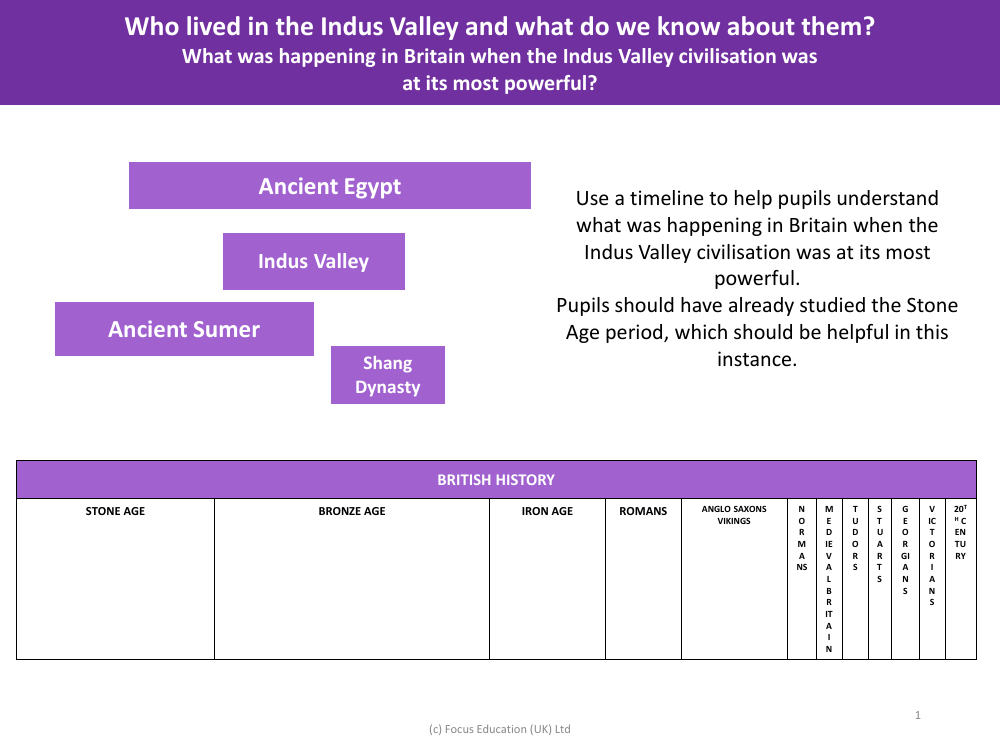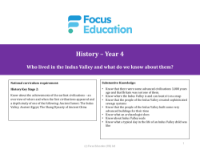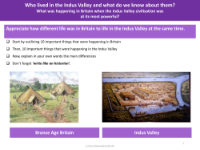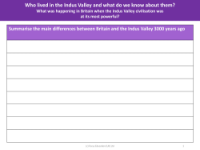Timeline to understand what was happening in Britain when Indus Valley civilisation was at its most powerful? - Worksheet - Year 4

History Resource Description
The Indus Valley civilisation, known for its advanced urban infrastructure, sophisticated craftsmanship, and vibrant trade systems, was one of the world's earliest urban civilisations. It flourished around 2500 BCE in the fertile plains along the Indus River, present in today's Pakistan and northwest India. The people of the Indus Valley, also referred to as Harappans, are famed for their well-planned cities with complex drainage systems, impressive architecture, and a script that remains undeciphered to this day. This civilisation was contemporary with other great ancient cultures, such as Ancient Egypt and the Shang Dynasty in China.
During the time when the Indus Valley civilisation was at its zenith, Britain was in the Neolithic period, transitioning into the Bronze Age. The inhabitants of Britain at that time were primarily engaged in farming, having moved on from the hunter-gatherer lifestyle of the earlier Stone Age. They constructed monumental structures like Stonehenge and began to work with metal, marking the dawn of the Bronze Age. This period saw significant developments in agriculture, domestication of animals, and advancements in tool-making. By comparing the timelines of these two regions, pupils can gain insight into the different stages of societal development and the diverse histories unfolding simultaneously across the world.




